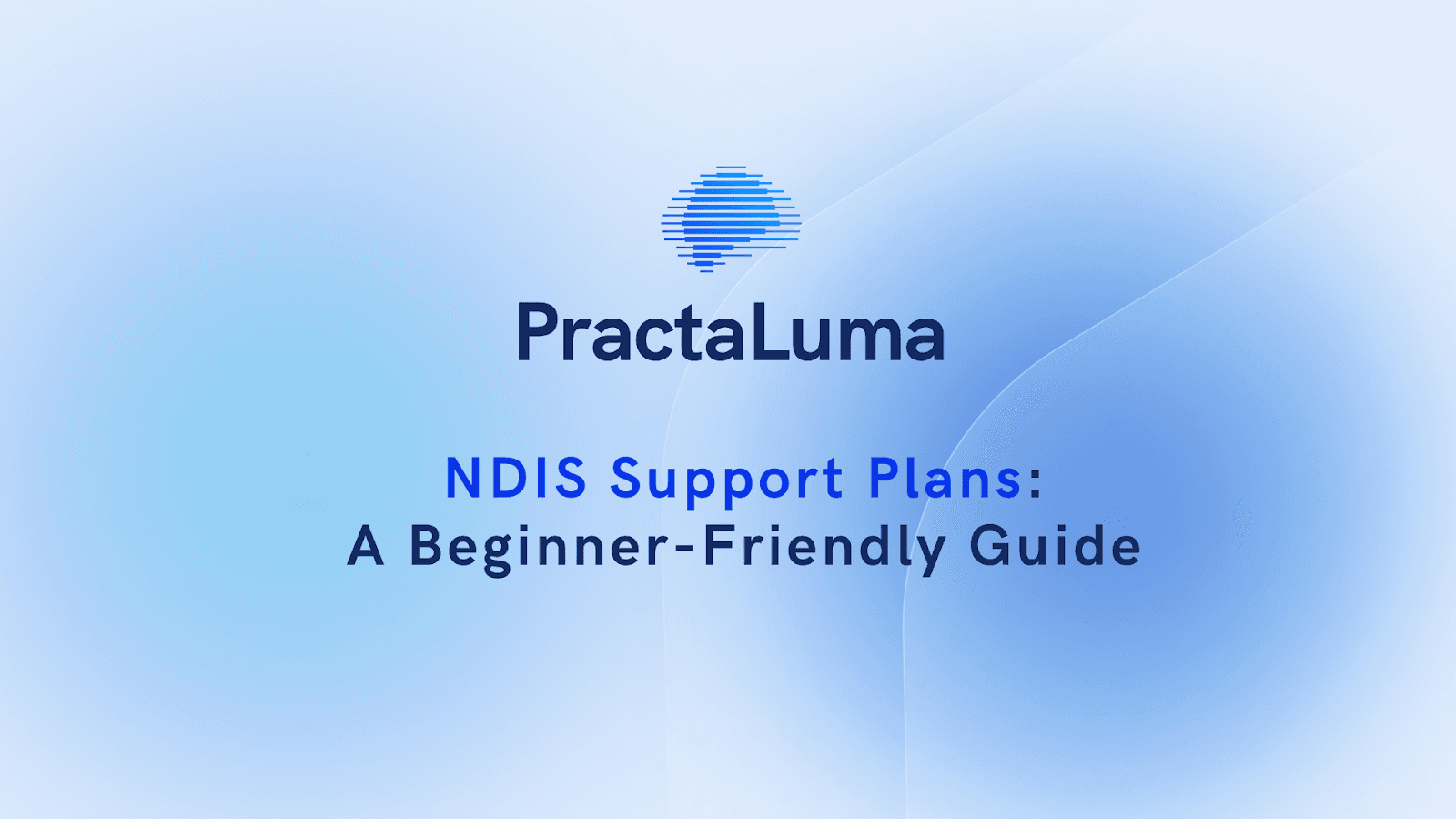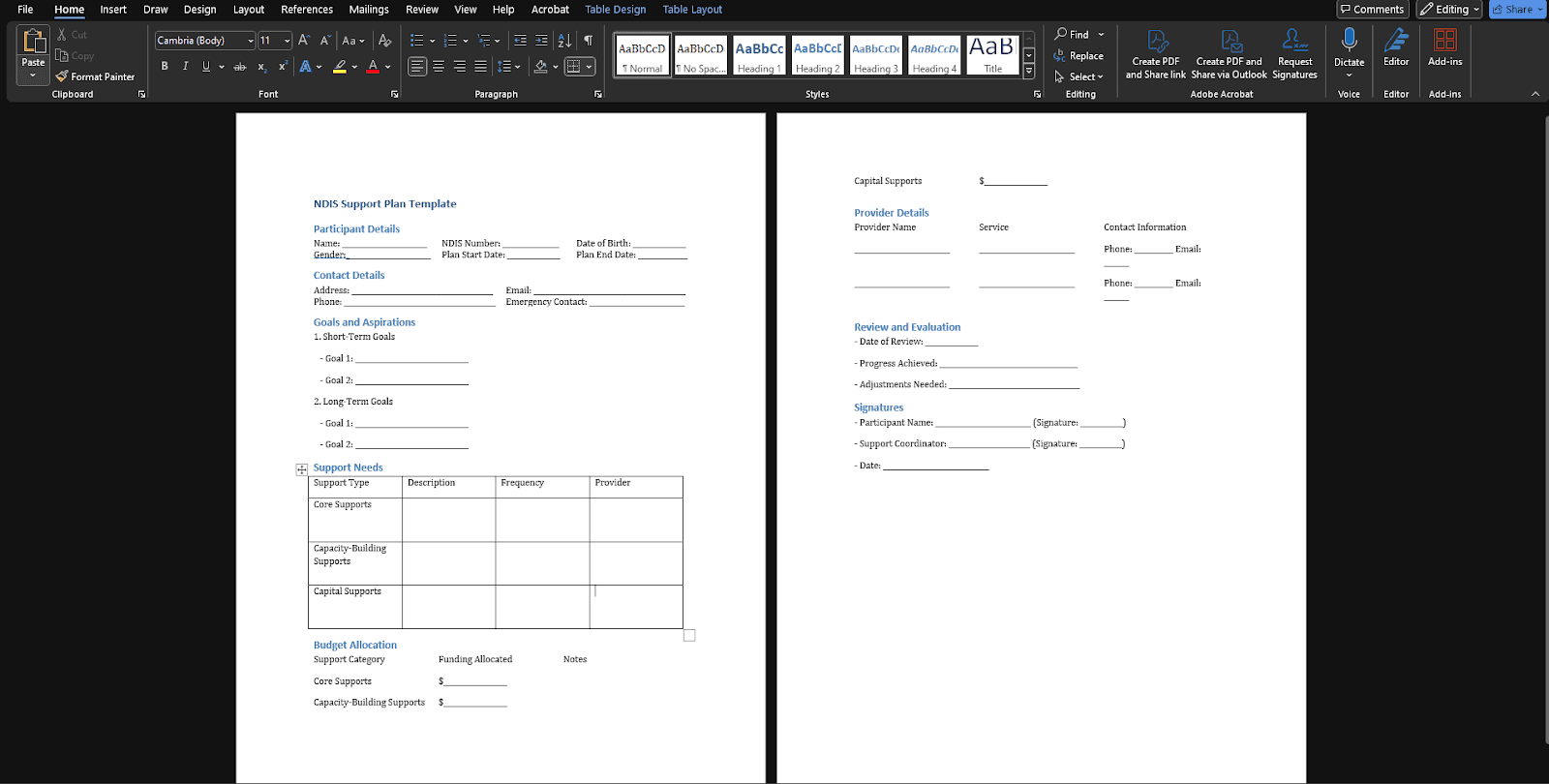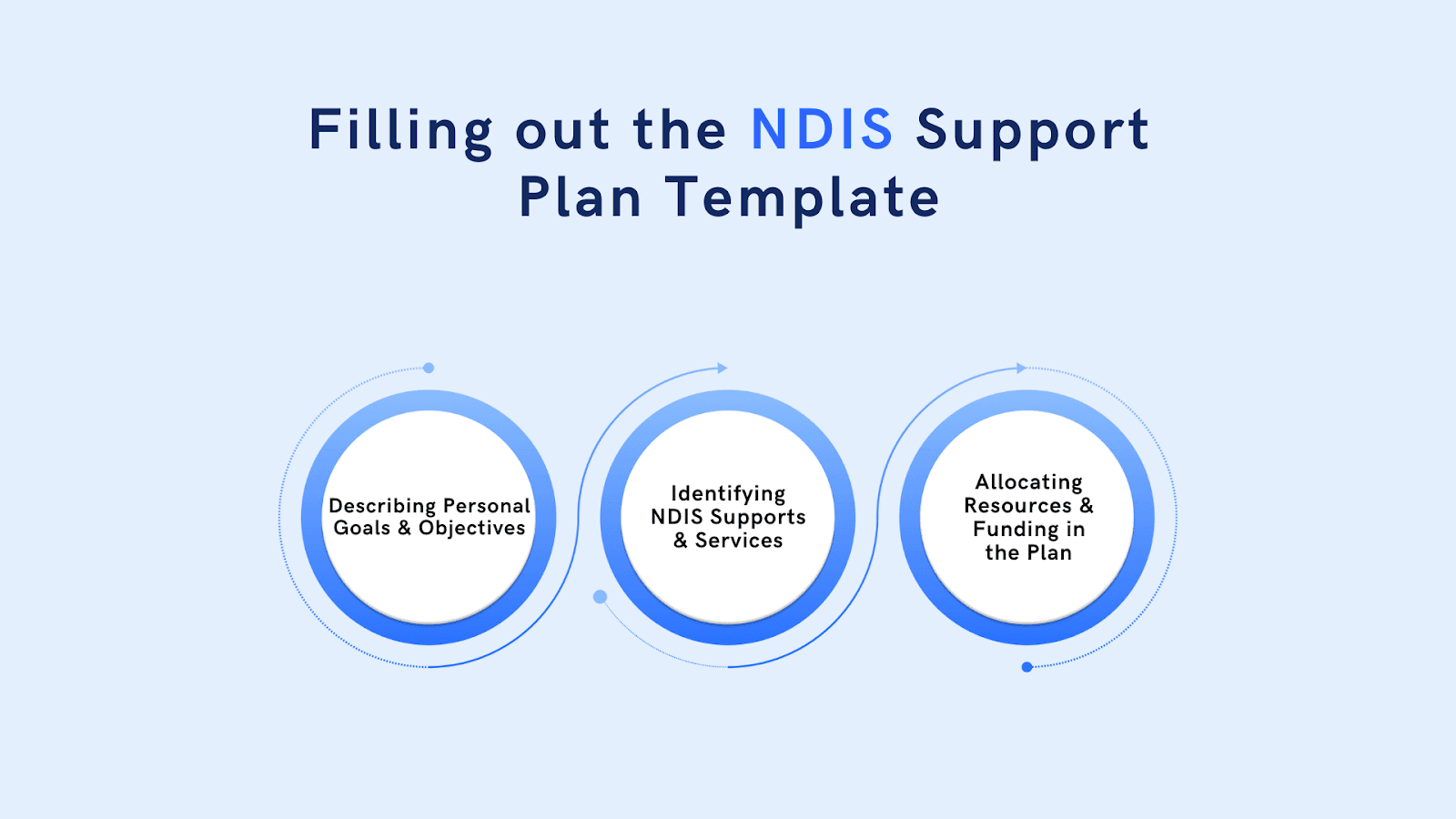
13 March 2025
NDIS Support Plans: A Beginner-Friendly Guide
The National Disability Insurance Scheme (NDIS) is a transformative program in Australia designed to provide funding and support to individuals with disabilities.
For mental health practitioners, the NDIS is a framework for planning and delivering comprehensive support services, ensuring participants can access the care and tools they need to achieve their personal goals.
Crafting a comprehensive NDIS support plan using a template can transform how participants and mental health professionals approach disability support. A support plan is a personalised roadmap detailing goals, required services, and funding allocations. By aligning goals and services with NDIS requirements, a well-structured plan ensures that resources are allocated effectively, enhancing participant outcomes.
This guide explores the key aspects of creating, managing, and optimising an NDIS support plan using a Word template. With step-by-step instructions, you’ll learn how to ensure the plan is tailored to individual needs while adhering to NDIS standards, empowering both participants and practitioners to achieve meaningful outcomes.
NDIS and its Purpose
To understand the significance of a support plan, it’s essential to grasp the broader objectives of the NDIS first. The National Disability Insurance Scheme (NDIS) aims to provide Australians with disabilities the support they need to achieve independence and participate in the community. By offering funding for tailored services, the NDIS enables participants to work towards their personal goals while accessing essential resources.
Understanding the NDIS’s objectives is vital for mental health professionals. This knowledge allows professionals to develop support plans that maximise funding opportunities and deliver meaningful results for participants.
Importance of a Well-Structured NDIS Support Plan
For mental health professionals, such plans can facilitate meaningful collaboration with participants and other stakeholders. A thoughtfully designed support plan serves as a blueprint, helping you achieve personal objectives. It outlines essential supports and justifies funding, ensuring your participants receive appropriate services.
1. Clarify Goals: A well-structured plan provides a clear outline of the participant’s short- and long-term aspirations.
2. Enhances Communication: It serves as a communication tool between participants, providers, and NDIS planners.
3. Ensures Accountability: By defining responsibilities and resources, the plan holds all stakeholders accountable.
Now that its importance is highlighted, let’s explore the direct role an NDIS support plan plays in securing funding and accessing services.
Role of the Support Plan in NDIS Funding and Services
The support plan is central to accessing NDIS funding. Detailing the participant’s goals, needs, and supports ensures funding is allocated to services that provide maximum value. A clear, persuasive plan strengthens funding applications and simplifies service delivery.
1. Justifies Funding Requests: Demonstrates the necessity of requested supports.
2. Streamlines Access to Services: Ensures participants can quickly and efficiently obtain needed assistance.
3. Promotes Goal Achievement: Aligns funding with services that directly contribute to personal development.
With this understanding, the next step is to delve into how a Word template can simplify the process of creating a robust support plan.
Understanding the NDIS Support Plan Word Template
A Word-based NDIS support plan template offers a flexible and user-friendly approach to documenting goals and services. Its structured format simplifies the planning process and ensures compliance with NDIS standards.
Basics of the NDIS Support Plan Template
The Word template includes pre-defined sections for personal information, goals, support, and funding allocations. Its design ensures that all critical elements are captured, making it easier for participants and professionals to collaborate.
- Pre-Formatted Sections: Simplifies the process of inputting relevant data.
- Customisation Options: Allows users to tailor the template to individual needs.
- User-Friendly Interface: Ensures accessibility for participants and professionals.
Now that we understand the basics, let’s break down the key components of the template document.
Components of the Template Document
The template typically includes:
1. Personal Details: Contact and emergency information.
2. Goals and Aspirations: Short- and long-term objectives.
3. Supports and Services: These are the required services and their providers.
4. Funding Breakdown: Allocations across NDIS categories.
Each section is crucial in creating a comprehensive and compliant plan. Understanding these components leads us to explore why a Word template is the ideal tool for NDIS planning.
Purpose of Using a Word Template for NDIS Support Plans

Using a Word template ensures consistency and simplifies updates. It allows for customisation to suit individual needs, making it a valuable tool for participants and professionals alike.
1. Streamlined Updates: Facilitates quick modifications as the participant's needs evolve.
2. Enhanced Clarity: Ensures all required information is presented clearly and professionally.
3. Time Efficiency: It saves time by providing a ready-to-use structure.
With a strong foundation in place, the next step is to create a customised NDIS support plan tailored to individual needs.
Creating a Customised NDIS Support Plan
Creating a customised NDIS support plan involves careful preparation and attention to detail. By following these steps, you can ensure the plan is both personalised and compliant.
Setting Up the Word Document for NDIS
Start by downloading a compatible Word template that aligns with NDIS requirements. Customise its layout to reflect the participant’s preferences and goals.
1. Download and Open Template: Ensure the template is NDIS-compliant.
2. Customise Layout: Adjust formatting and design to suit individual needs.
3. Add Clear Headings: Ensure all sections are clearly labelled for easy navigation.
Once the document is set up, it’s time to examine the details of each section.
Detailed Examination of Template Sections
Review each section carefully to ensure completeness:
1. Personal Information: Verify accuracy.
2. Goals: Use SMART criteria (Specific, Measurable, Achievable, Relevant, Time-bound).
3. Supports: Clearly link services to goals.
4. Funding: Provide a transparent breakdown.
After understanding the sections, let’s focus on incorporating personal touches to make the plan truly unique.
Incorporating Personal Information and Goals
Personalise the plan by highlighting the participant’s strengths and aspirations. Ensure the goals align with their unique circumstances and the NDIS’s overarching objectives.
- Highlight Strengths: Showcase the participant’s capabilities and ambitions.
- Align with NDIS Objectives: Ensure goals are consistent with NDIS priorities.
- Include Milestones: Break down larger goals into achievable steps.
With the plan’s structure in place, it’s time to focus on accurately filling out the template.
Filling out the NDIS Support Plan Template

Completing the template accurately is essential to creating an effective support plan. Attention to detail ensures the plan meets the participant’s needs and complies with NDIS standards.
1. Describing Personal Goals and Objectives
Clearly articulate the participant’s goals, using language that reflects their priorities. Highlight both immediate needs and long-term aspirations for a holistic view.
- Short-Term Goals: Focus on immediate needs and actionable steps.
- Long-Term Aspirations: Outline broader objectives and desired outcomes.
- Use Positive Language: Frame goals in an optimistic and achievable manner.
To complement these goals, it’s vital to identify the specific supports and services required.
2. Identifying NDIS Supports and Services
List all required supports, such as therapy, assistive technologies, or community programs. Detail how these supports align with the participant’s goals and enhance their quality of life.
- Therapeutic Supports: Include counselling, physiotherapy, or occupational therapy.
- Assistive Technologies: Specify devices or tools that improve daily functioning.
- Community Participation: Highlight programs that foster social engagement.
With support identified, let’s allocate resources to ensure funding aligns with the plan’s objectives.
3. Allocating Resources and Funding in the Plan
Break down funding allocations by category (e.g., Core Supports, Capacity Building). Use tables for clarity, ensuring allocations align with stated goals and services.
1. Core Supports: Daily living assistance and personal care.
2. Capacity Building: Skills development and independence.
3. Capital Supports: Equipment and home modifications.
Once the plan is complete, it’s essential to optimise it for NDIS approval.
Optimising the NDIS Support Plan for Approval
A well-optimised support plan increases the likelihood of approval by NDIS planners. Ensuring clarity, accuracy, and alignment with NDIS standards is key.
Aligning the Plan with NDIS Standards and Guidelines
Ensure compliance with NDIS requirements by:
1. Using Clear Language: Avoid jargon and overly technical terms.
2. Providing Evidence: Justify funding requests with supporting documentation.
3. Aligning Services with Goals: Demonstrate how supports contribute to achieving objectives.
After aligning the plan, review it thoroughly for clarity and accuracy.
Ensuring Clarity and Accuracy of Information
Review the document for errors or inconsistencies. A polished, error-free plan enhances credibility and improves approval chances.
1. Proofread Thoroughly: Eliminate typos and formatting issues.
2. Verify Details: Ensure all information is accurate and up-to-date.
3. Seek Feedback: Collaborate with participants and stakeholders for input.
With the plan reviewed, submitting it requires a comprehensive and persuasive approach.
Tips for Submitting a Comprehensive and Persuasive Plan
1. Attach Supporting Documentation: Include assessments, medical reports, or letters of recommendation.
2. Emphasise Participant Progress: Highlight achievements and ongoing efforts.
3. Maintain Professional Presentation: Use a clean, organised format.
Moving forward, regular reviews and updates are necessary to keep the plan relevant.
Reviewing and Updating the NDIS Support Plan
Regular reviews and updates keep the support plan relevant and effective. Adjusting the plan to reflect changing needs ensures continued alignment with the participant’s goals.
Regular Review Schedules and Processes
Review the plan periodically, typically every 6-12 months, to ensure it remains relevant and reflects the participant’s evolving needs.
1. Schedule Reviews: Establish routine check-ins to evaluate progress.
2. Document Changes: Record updates and amendments for reference.
3. Engage Stakeholders: Involve participants and providers in the review process.
To enhance its relevance, amendments and updates must reflect current needs.
Making Amendments and Updates to the Plan
Work with the participants and stakeholders to incorporate changes in circumstances or goals. Regular updates keep the plan effective and aligned with current needs.
1. Identify New Needs: Adjust supports to address emerging challenges.
2. Update Goals: Revise objectives to reflect progress or new aspirations.
3. Reallocate Resources: Ensure funding aligns with updated priorities.
By ensuring that the plan reflects current needs, it remains an accurate representation of the participant’s circumstances.
Ensuring the Plan Reflects Current Needs and Circumstances
Frequent updates ensure that the plan accurately reflects the participant’s goals, priorities, and support requirements.
1. Monitor Progress: Track outcomes to guide updates.
2. Stay Flexible: Adapt the plan as circumstances evolve.
3. Maintain Alignment: Ensure ongoing compliance with NDIS standards.
Technology can play an important role in streamlining these processes.
Utilising Technology for Effective NDIS Support Plans

Technology offers valuable tools for streamlining the creation and management of NDIS support plans. Leveraging these tools can improve efficiency and collaboration.
Benefits of Using Digital Word Templates
Digital templates streamline the planning process by:
- Simplifying Edits: Allowing for quick updates and modifications.
- Enabling Collaboration: Supporting shared access among stakeholders.
- Ensuring Consistency: Maintaining a professional and organised format.
Beyond templates, additional tools and software can further enhance the process.
Tools and Software for Editing and Managing NDIS Plans
Leverage tools like Microsoft Word, Google Docs, or specialised NDIS software to create and manage plans efficiently. These platforms enable real-time collaboration and ensure compliance with NDIS standards.
- Microsoft Word: Ideal for customisation and formatting.
- Google Docs: Facilitates real-time collaboration and sharing.
- NDIS-Specific Software: This offers tailored features for support planning.
With tools in place, sharing and collaborating on plans becomes seamless.
Sharing and Collaborating on NDIS Plans Digitally
Use cloud-based platforms like PractaLuma for seamless collaboration with participants and service providers. This fosters transparency and ensures that everyone remains informed.
- Cloud Storage: Centralise documents for easy access.
- Collaborative Editing: Allow multiple users to contribute simultaneously.
- Secure Sharing: Protect sensitive information with encryption.
Despite these advances, challenges in plan creation and management persist. Let’s address common issues and their solutions.
Common Challenges and Solutions in Using NDIS Support Plan Templates
Creating and managing NDIS support plans can present challenges. Identifying common pitfalls and strategies to overcome them ensures that the process remains smooth and effective.
Addressing Common Pitfalls in Filling Out Templates
Avoid vague descriptions and incomplete sections. Ensure all fields are accurately and comprehensively filled.
- Be Specific: Clearly define goals and supports.
- Avoid Gaps: Complete every section of the template.
- Seek Clarification: Consult NDIS guidelines when in doubt.
Strategies to overcome these barriers can simplify the process further.
Strategies for Overcoming Barriers and Difficulties
1. Seek Input from Participants: Incorporate their perspectives and priorities.
2. Use Professional Assistance: Engage experts for guidance.
3. Utilise Training Resources: Access NDIS workshops or online materials.
To better avoid common barriers and challenges, use PractaLuma’s AI note generation and find all your information and notes in one place!
FAQs
1. What is the purpose of an NDIS support plan?
A: The purpose is to outline individual goals, required supports, and funding allocations to align with NDIS standards.
2. How do I ensure my plan is compliant with NDIS guidelines?
A: Review the NDIS guidelines and ensure all sections are complete, accurate, and supported by relevant evidence.
3. What should I do if I encounter formatting issues in the template?
A: Check compatibility settings or switch to a different Word version. Cloud-based tools can also help resolve issues.
4. Can I use a digital signature on my plan?
A: Yes, a digital signature is acceptable and can enhance the document’s professionalism and authenticity.
5. How often should the plan be reviewed?
A: Plans should be reviewed every 6-12 months or whenever significant changes occur in the participant’s circumstances.
6. What tools are best for collaboration on NDIS plans?
A: Cloud-based tools like Google Docs or Microsoft OneDrive enable real-time collaboration and secure sharing.
7. How do I ensure my plan is persuasive?
A: Use clear language, attach supporting documents, and emphasise the participant’s progress and goals.
Conclusion
Crafting an effective NDIS support plan is a meticulous yet rewarding process. By leveraging structured templates, mental health professionals and participants can create detailed plans that meet NDIS requirements and empower individuals to achieve their goals.
Moving forward, integrating technology and maintaining regular updates can enhance the plan’s effectiveness. Tools like PractaLuma’s AI Clinical Assistant can help you be more efficient by keeping your patients' clinical notes in one secure place while also allowing you to integrate them with other Medicare software. By embracing these tools and strategies, participants and professionals alike can ensure that NDIS plans remain relevant, efficient, and impactful in achieving meaningful outcomes. Find out more about PractaLuma here.